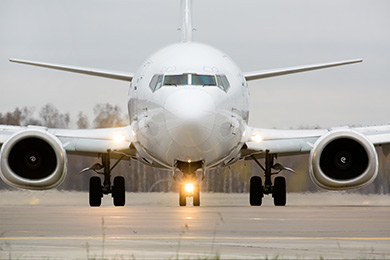I remember a bitter global trade dispute from my days as a reporter, back in the 1990s – you might, too.
Rochester, N.Y.-based Eastman Kodak Co. (NYSE: KODK) alleged Japanese rival Fujifilm Holdings NPV (OTCMKTS: FUJIF) was employing unfair practices – colluding with the Japanese government to create a “profit sanctuary” and erecting trade and distribution barriers – to dampen competition in Japan and abroad, and achieve dominance in the world photo products market.
[ad#Google Adsense 336×280-IA]From what I could see, anecdotally, Kodak’s claims had at least some merit.
The European Commission agreed, but the World Trade Organization didn’t see it that way; Fuji was allowed to continue to press its advantage.
Winning the dispute made Fuji a bigger, bolder company.
It invested in itself.
I went on a tour of Fuji’s Greenwood, S.C. plant, and it blew Kodak’s facilities out of the water; it was “modular,” modern, more efficient, and more easily able to adapt to fluctuations in market preferences.
Of course, the birth of digital photography soon made the dispute academic. We never got to see how it all might’ve played out.
Now, I mention all this because the WTO just issued another landmark ruling in a major international trade dispute with billions at stake.
I can’t say history is repeating, though – this time, the organization sided with the American firm and against its rival in Europe.
That’s great news for American industry, but especially for my readers. They’ve got the chance to reap a whole new batch of profits – after we’ve already seen peak gains of 157%.
We’re backing the winning horse here, folks…
Come Fly the Unfriendly (and Anti-Competitive) Skies
 I was thinking about the Kodak-Fuji rivalry after seeing that the WTO ruled against commercial airplane maker Airbus Group SE (OTCMKTS ADR: EADSY) – the arch-rival of longtime Private Briefing favorite, The Boeing Co. (NYSE: BA).
I was thinking about the Kodak-Fuji rivalry after seeing that the WTO ruled against commercial airplane maker Airbus Group SE (OTCMKTS ADR: EADSY) – the arch-rival of longtime Private Briefing favorite, The Boeing Co. (NYSE: BA).
Boeing was one of our earliest recommendations, delivering those peak gains of 157% I mentioned.
Because I’ve been covering the defense and aerospace sectors for most of my 30-plus years in financial journalism – as well as my intense, lifelong personal interest in aviation – Boeing is a company I know very well.
And the competitive rancor Boeing and Airbus display toward each other reminds me very much of the ill will that Kodak and Fuji directed at one another.
Last week’s WTO decision is an outgrowth of that often-vituperative rivalry.
It’s a long-running, multibillion-dollar dispute that pits Boeing against Airbus, and the U.S. government against the European Commission (the executive arm of the EU) – with claims that state governments have provided illegal subsidies to their “hometown” plane-makers.
In the 574-page verdict released just last week, the WTO ruled that the EU had failed to eliminate illegal subsidies to Airbus.
According to the WTO, the EU and some of its member states “failed to comply” with an earlier ruling to either remove the subsidies, or at least eliminate the beneficial effect. The EU apparently took some measures after that earlier ruling – but the Geneva-based trade adjudicator said those moves were not meaningful.
Of course, the European Commission defended its moves.
Boeing CEO Dennis A. Muilenburg said the ruling was “a victory for fair trade worldwide and for U.S. aerospace workers, in particular.” Sources have told news organizations that Washington could seek $7 billion in retaliatory tariffs.
But the aftermath of the U.S.-favorable WTO ruling is really just a lull in the action.
The WTO Case Doesn’t Actually End Here
According to a report in The Wall Street Journal, the WTO is expected at some point to issue a similar ruling that Washington similarly failed to address concerns about subsidies that help Boeing.
This trade case could drag on for years.
But we want to watch it anyway, for several key reasons.
 First, as we saw glimpses of in Monday’s presidential debate, global trade figures to be a big, big issue in the weeks leading up to the November presidential election.
First, as we saw glimpses of in Monday’s presidential debate, global trade figures to be a big, big issue in the weeks leading up to the November presidential election.
And because, like immigration, it’s such an emotionally charged topic, it’s an issue that, come January, the new occupant of the White House won’t be able to ignore.
Second, even though this trade case will be with us for a long, long time, its outcome will help shape the industry landscape, which in turn will determine how much we can make from Boeing’s shares.
Third, airplane subsidies are becoming a specific “hot button” in global trade talks. Rivals have ripped the Canadian government and Canada-based airplane firm Bombardier Inc. (OTCMKTS: BDRBF), which accepted a capital infusion from Quebec in return for a stake in the company’s C-Series single-aisle airplane initiative.
[ad#Google Adsense 336×280-IA]China and Russia are also developing single-aisle airplanes, and you can bet those development programs and the sales efforts that follow will benefit from aggressive government backing.
(I’ve been writing about China’s jumbo-jet aspirations for nearly a decade, and have seen some of my early reports get cited in academic research and even a book on the topic.)
We’re likely on the cusp of a very profitable – and very crowded – new era in aviation investing. That in and of itself is worth watching closely.
But for the moment, we’ll have enough of a gains opportunity on our hands with Boeing.
Make Sure You Buy Boeing “On the Dips,” Too
For now, however, this WTO ruling only strengthens our investment case for Boeing, which we continue to rate as an “Accumulate” – meaning it’s a stock you want to buy now and add to on weakness.
As I said, since we first recommended Boeing in September 2011, subscribers have had the chance to pull down peak gains of 157%.
And back in January 2013 – when the company was getting hammered during the whole “Dreamliner battery” media frenzy – I told subscribers to ignore the gloom-and-doom forecasts and buy the stock.
Anyone who acted on that contrarian call and watched the stock zoom from $75 to more than $141 in just 12 months – a nearly 87% gain. And the surge to the record high of $158.83 achieved in February 2015 meant that folks who acted on our “ignore the gloom” call achieved peak gains of more than 100%.
Since then, we’ve reiterated our belief that Boeing was one of the best big caps to own – and placed it on our two “shopping lists” of wealth-building stocks to accumulate.
The company has a huge backlog. It’s the market leader. It’s an innovator. And the long-term market potential remains huge.
— William Patalon III
[ad#mmpress]
Source: Money Morning
